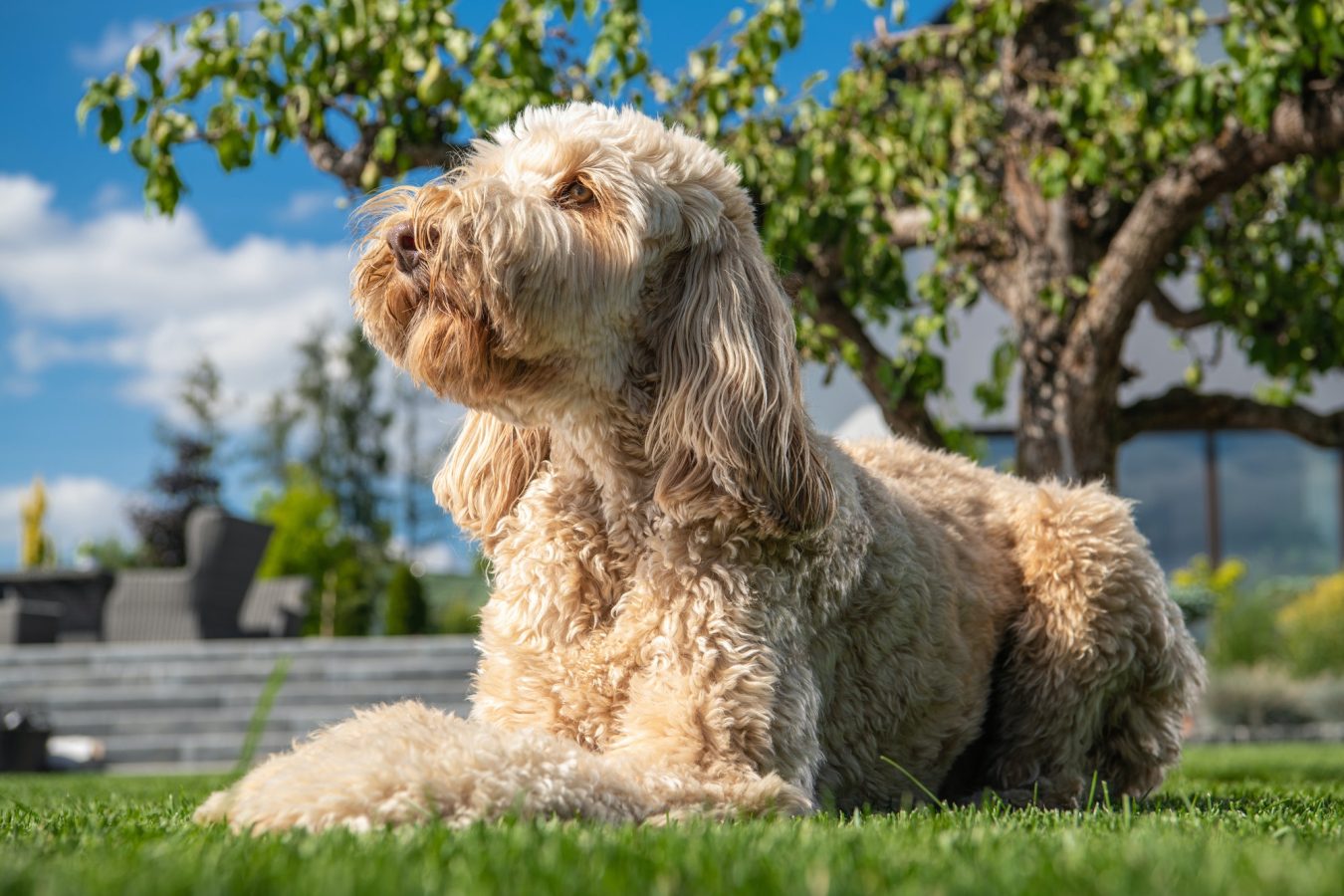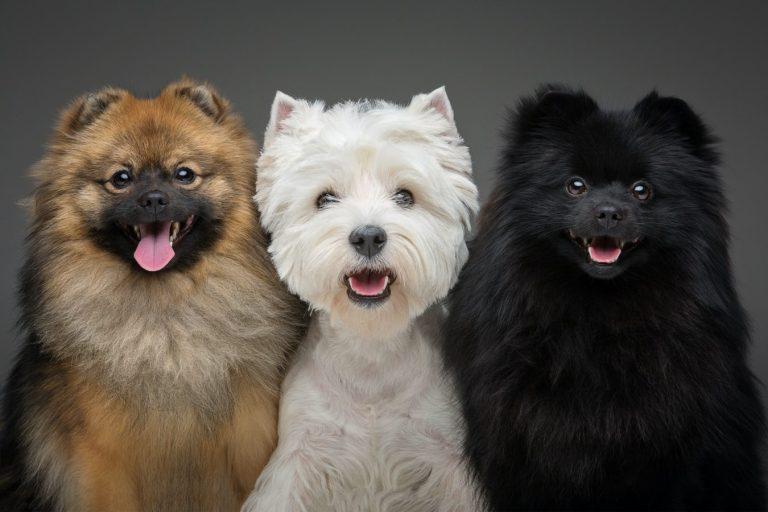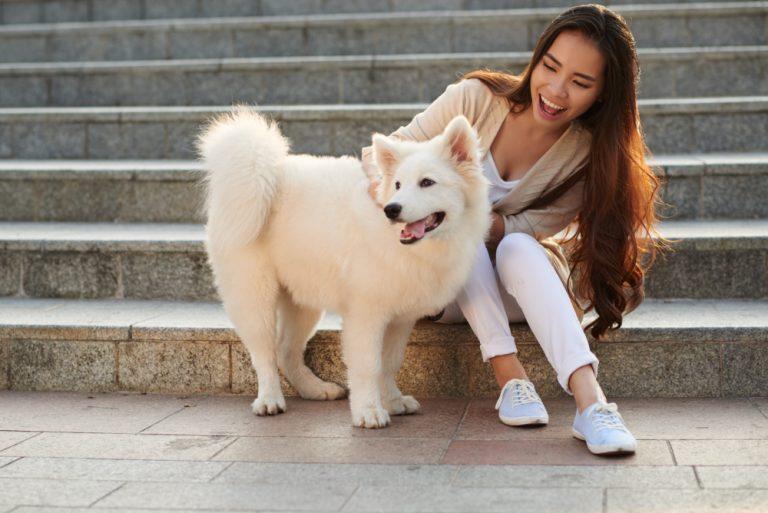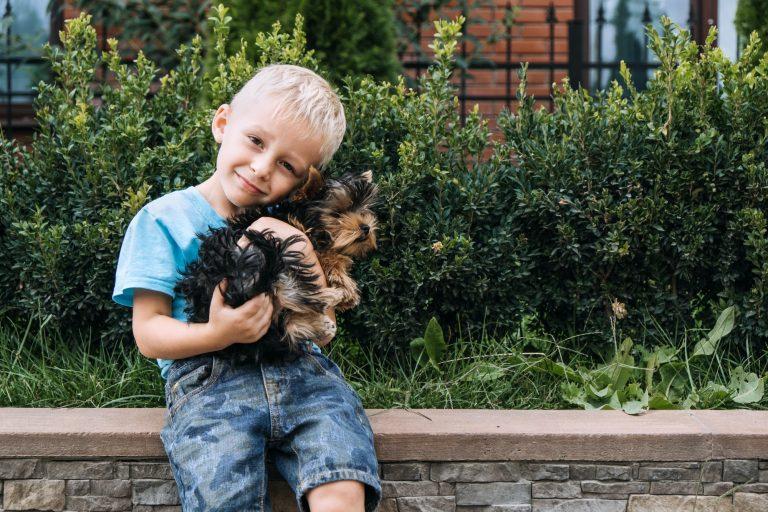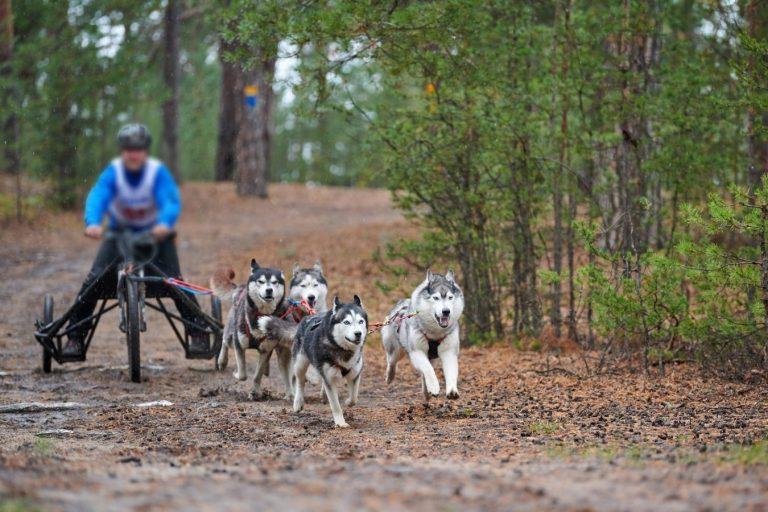Popular Dog Breeds That Made 3 Designer Dogs Famous
A designer dog is the offspring of two purebred dogs. The purebred dog has a documented ancestry and can be registered with a national kennel club such as the American Kennel Club, the Kennel Club, and the United Kennel Club. A designer dog can not be registered with one of the major kennel clubs, but an organization registers designer dogs, the Designer Kennel Club.
Designer Dogs
If you mate a purebred dog to another purebred of the same breed, the puppies will “breed true.” If you breed a Golden Retriever to another Golden, the puppies will look and act like Golden Retrievers.
You are never sure what you will get if you breed non-purebred dogs (mutts, curs, mongrels, etc.). As Forest Gump would say (paraphrasing): “Life is like a box of chocolates. You never know what you’re going to get.” Similarly, when you mess with dog genetics, you get a box of dog chocolates. No two are likely to be exactly the same.

Unlike mixed-breed dogs, the first-generation puppies of two purebred dogs will be very similar. If you breed a Golden Retriever with a Poodle, the Goldendoodle, as the pups are called, will be the same each time the two dogs produce puppies. For the first generation, designer dog pups are similar. Breeding two Goldendoodles, however, may not have a puppy that is exactly like its parents.
The breeding of non-purebred dogs is not what we mean by hybrid or “designer dogs.” Designer dogs are the offspring of two purebred dogs of different breeds. For example, the first designer dog may have been a “Cockapoo,” the mating of a Cocker Spaniel and a Poodle in the 1960s. (The 60s don’t seem all that way back to me, but that just shows my age.)
Breeds Commonly Used For Designer Dogs
Theoretically, you can use any two breeds to produce a designer dog. Practically speaking, the most popular designer breeds come from just a few pure breeds. The Poodle, Cocker Spaniel, Labrador, and Golden Retriever are a few of the breeds most commonly used.
The Poodle is often the breed of choice as one of the parents. The better-known designers are the Cockapoo, the Labradoodle, and the Goldendoodle. Others include the Schnoodle, Doxiepoo, Pomapoo, Yorkipoo, and Pupapoo. Two of the non-Poodle designers are the Puggle and Pomsky.
What is a Cockapoo
A Cockapoo (cockapoodle, cockerpoo, cock-a-poo) is a crossbreed between a Cocker Spaniel and a Poodle. The first known crossbreeding of this designer dog was likely by accident in the 1960s. These “hybrid dogs” became popular, and a new type of dog breed began the designer dog. The puppies turned out to be happy, intelligent, and low-shedding dogs.

The Cockapoo was the start of today’s popular designer dogs. The results of the first crossbreeding of a Cocker Spaniel and Poodle were popular. The puppies were intelligent, with low shedding coats, loving personalities, and almost odorless. Today, designer dog breeders are working on developing a Cockapoo breed that has consistent traits.
Perhaps the most significant variable for the Cockapoo is which size Poodle you use. Both dog breeds can have coats of several different colors. Cocker Spaniels have a reasonably uniform size, but the Poodle, even though it is considered a single breed, can range from 4 pounds to 70 pounds.
There are some differences between the American and English Cocker Spaniels. Luckily you can tell the dog’s nationality because the English Cockapoo barks with a distinctive British accent with a hint of French undertones (ha).
Appearance
Cockapoos come in four size classes. A teacup toy dog is shorter than 10 inches and weighs under 6 pounds. A toy Cockapoo grows to 10-11 inches and weighs around 12 pounds. The miniature Cockapoo weighs between 11-14 inches and weighs 13-18 pounds. Lastly, the maxi Cockapoo grows to over 15 inches and weighs more than 19 pounds.
This dog combination comes in various colors, some are solid, and others are mixed. Consequently, they will also have a wide range of color possibilities. Standard colors include black, brown, white, red, cream, tan, and chocolate.
Personality
Cockapoos have a great appearance, but their breeding goal was temperament. For most of the 1930s, 40s, and 50s, the Cocker Spaniel was the most popular dog breed in the United States. Cockers are sweet, loyal family dogs (I grew up with 2 Cocker Spaniels). They’re also intelligent, playful, and easy to train.
Poodles also have an endearing personality, as well as being very smart. They shed very little, which helps reduce the likelihood of triggering allergic reactions.
Cockapoos are very intelligent, and training them is relatively easy. They play with children and other pets without being aggressive. Active people will enjoy going out with a Cockapoo and having fun outdoors.
These designer dogs have an expected lifespan of 12 to 15 years, although they have lived to 20 years in some exceptional cases. However, their lifespan depends on various factors, including diet, health status, exercise level, and living conditions.
Labradoodles Made Designer Dogs Famous

The Labradoodle combines the most popular dog breed in the United States, the Labrador Retriever, and the number 7 most popular, the Poodle. Labradoodles were not the first designer dog (that was the Cockapoo), but it was the one that made designer dogs famous.
These dogs are not only adorable, but they are also a fantastic addition to any family with children and other animals. They are also extremely loyal. What’s not to love about this fantastic dog combination?
The Labradoodle will probably check all your boxes for those looking for a new furry best friend. However, there are some essential facts and background information about this dog breed that you should know before getting one. This will help you decide whether or not the Labradoodle is a good fit for you.
The Beginning
Who deserves the credit for being the first to breed a Lab with a Poodle is unclear. The name and dog mix was around in the 1950s but did not catch on initially. However, an Australian, Wally Conron, is often credited for making this hybrid dog popular when he produced a Labradoodle in the early 1990s. He wanted a guide dog that was also hypoallergenic.
Conron wanted to breed a dog for a blind woman whose husband also had severe dog allergies. To solve the couple’s needs, he used a Labrador Retriever, often used as a guide dog, bred with the Poodle, a breed known to work well with those with allergies.
Gaining Popularity
People quickly fell in love with this new dog mix. Unfortunately, breeders began thoughtlessly crossing any Labrador with any Poodle. Consequently, some earlier generations of Labradoodles were very unpredictable regarding physical characteristics and coat types. Many Labradoodles shed too much and were not significant for people with allergies.
Nowadays, breeders (most, anyway) pay closer attention to this issue, and Labradoodles are rarely bred with shedding coats. Labradoodles are still commonly used as guide and therapy dogs and for other types of assistance and service dogs. They are also chosen as family dogs and are very popular with those who like large dog breeds.
Labradoodle Personality
Labradoodles are generally high-energy dogs who need lots of playtime and stimulation to stay happy. Additionally, the Labradoodle is amiable and will likely always want to be with its owners.
Since this breed is also a popular therapy and assistance dog, it is no surprise that they are highly devoted and affectionate with their owners and possess an innate desire and eagerness to please them.
They are also great with children and other animals and are typically viewed as a great first dog for those who have never owned a dog.
The Labradoodle breed is also a great swimmer and loves being in the water, so bonus points if you can provide a pool or nearby lake for your new furry friend to play around in. On top of that, Labradoodles are generally pretty easy to train as long as their owners stay consistent since they are eager to please their owners.
Labradoodle Appearance
How your Labradoodle will grow up to look largely depends on its genetics. That is, how dominant the Poodle or Labrador genes are in your dog’s DNA. Some Labradoodles are blonde, while others are chocolate, black, apricot, and red. The coat on the Labradoodle also depends on genetics and can either be soft and wavy (Lab dominates) or curly (Poodle dominates).
The size of Labradoodles also can vary. Labradoodles come in three size variations, largely depending on the Poodle used for the first-generation breeding. The sizes are Standard, which ranges from 21-24 inches and 50 to 65 pounds. Medium ranges from 17-20 inches and 30 to 45 pounds, and Miniature ranges from 14 to 16 inches and will only grow to be about 15 to 25 pounds.
Potential Problems
Labradoodles are generally pretty healthy dogs and live 12 or more years. But they can also be predisposed to specific health conditions. These health conditions include ear infections, hip and elbow dysplasia, epilepsy, and allergies. Routine visits to the vet will work to ensure that any of these potential health issues are closely monitored and kept under control.
Labradoodles are amiable, energetic, and friendly dogs that may be enticing for many. Still, potential owners should also be cautious that these dogs are better suited to live in a home, not an apartment. This is because Labradoodles require loads of exercise and outdoor time and are likely to adapt better if placed in an environment with a fenced-in yard where they can run around.
A first-generation Labradoodle is from a purebred Lab and a purebred Poodle. If you want more of one breed or the other, you might breed a first-generation Labradoodle with either another purebred Lab or Poodle. These subsequent generations, such as F1, F1B, F2, F2B, & F3, are sometimes numbered. For information on what goes into these dogs, visit We Love Doodles. The Australian Labradoodle Association of America provides guidance and information about the breed.
They are loyal, devoted, affectionate, and easy to train, which makes them a perfect fit for nearly any family. The Labradoodle could be an ideal fit for those who desire a new adorable dog with many excellent benefits!
The Goldendoodle
Regarding designer dogs, the Goldendoodle is an intelligent option if you want to add a new furry member to your family.

Goldendoodles, a crossbreed of the Golden Retriever and a Poodle, are beautiful and unique and are sure to make an excellent addition to any family. If you are curious about Goldendoodle, keep reading to find valuable information about this beautiful dog breed!
The Goldendoodle breed was initially bred in the 1990s in both the United States and Australia as guide dogs. Goldendoodles today are still sometimes used as therapy, guide, and agility dogs but tend to be more of a popular dog breed to have as a family pet.
The Goldendoodle was bred as a dog to appeal to those who love the non-shedding, hypoallergenic nature of the Poodle dog breed and the sweet, happy temperament of the Golden Retriever.
Physical Traits of Goldendoodles
The way a Goldendoodle looks can vary when it comes to fur coloring. The color of each dog will depend mainly on how the Goldendoodle’s parents looked. Goldendoodles can come in various colors, including golden, red, apricot, black, and chocolate, and their coat can also be either curly or wavy, depending on the individual litter.
Goldendoodles also vary greatly when it comes to their size. The miniature Goldendoodle will only grow to be 15-30 pounds, while the medium Goldendoodle can range from 30-45 pounds. The standard Goldendoodle can grow to a whopping 45-100 pounds. While Goldendoodles can differ in these physical characteristics, they all have a commonality: they are allergy-friendly dogs and tend only to have minimal shedding. Also, all Goldendoodles range between 12-15 years in life expectancy.
Potential Problems with Goldendoodles
As with any designer dog breed, or any dog breed in general, some health or temperament issues are common. The Goldendoodles are no exception. Goldendoodles tend to be very healthy dogs if they are bred responsibly. However, they can still be prone to hip dysplasia, as both Poodles and Golden Retrievers are prone to this problem.
It would help if you took your Goldendoodle for regular hip exams to minimize this potential issue. Goldendoodles can also have eye disorders, so checking their eyes regularly when you go to the vet is also necessary.
Conversely, Goldendoodles’ temperament can also pose issues if placed with specific individuals. Since Goldendoodles are such loving and affectionate dogs, they can also tend to be a bit clingy and not like to be alone. So, if you do not want to constantly have a dog at your side and look for attention virtually 24/7, the Goldendoodle might not suit you.
Also, since Goldendoodles are so active and intelligent, they will need time allocated to lots of exercises and walks daily. This means placing them in a home with family members who are too busy to give them the proper training (at least one hour daily), and the long walks they need each day could pose issues.
On top of that, there is no natural way to tell what precisely a Goldendoodle will physically look like, and how big they will get could be a con to some potential pet owners. Some pet parents want a dog breed to know exactly what color their fur will be, what texture it will be, and how big or small it will be when fully grown. While appealing to some, the randomness that goes into a Goldendoodle’s physical traits could negatively affect others.
Other Designer Dogs
Besides the big three of Cockapoo, Labradoodle, and Goldendoodle, people use many other combinations to produce a designer dog. Examples include Schnoodle, Doxiepoo, Pomapoo, Yorkipoo, Pugapoo, and a couple of non-poodle mixes, the Puggle and Pomsky.
Schnoodle
Schnauzers and Poodles come in different sizes than the hybrid puppies they produce. Mixing a Poodle with a Schnauzer creates a Schnoodle, Schnauzerdoodle, Schnauzerpoo, or whatever name you choose. The Schnoodle began showing up in the 1980s.
Doxiepoo
Not all Doxiepoos, or any hybrid dog, will look the same. The Doxiepoo is a mix of a Dachshund and a Toy Poodle. Since both these breeds are small, the Doxiepoo should also be on the small side.
Pomapoo
The Pomapoo is the result of breeding a Pomeranian with a Toy Poodle. These little dogs are advertised to be intelligent and affectionate. If you are looking for a Pomapoo, check the shelters first.
Yorkipoo
A mix of Yorkshire Terrier and Toy Poodle produces a Yorkipoo. This hybrid dog comes from small, intelligent parents and inherits those traits. The goal of a Yorkipoo is to be a small, hypoallergenic companion dog.
Pugapoo
Pugapoo is a mix of a Pug and a Poodle. The looks and personality of the Pugapoo will depend on which traits of each breed it inherits. They should be small, affectionate dogs. Check the shelters first.
Puggle
The Puggle is a mix of Pug and Beagle. The Puggle arrived in the 1990s and seemed to be gaining some popularity. They are intelligent and love to play. The Puggle may tend to bark if it inherits this trait from the Beagle.
Pomshy
The Pomsky is a mix of Pomeranian and Siberian Husky. It is a relatively new designer dog attempt. The Pomsky looks like a fluffy miniature wolf. However, the looks of any designer dog are unpredictable.
Conclusion
Some breed clubs are opposed to using purebred dogs to produce designer dogs. For example, the Golden Retriever Club of America includes the following position on its website:
The Golden Retriever Club of America is opposed to cross-breeding of dogs and is particularly opposed to the deliberate crossing of Golden Retrievers with any other breed. These crossbreds are a deliberate attempt to mislead the public with the idea that there is an advantage to these designer dogs. The crossbred dogs are prone to all of the genetic disease of both breeds and offer none of the advantages that owning a purebred dog has to offer.
GRCA’s Position on Goldendoodles
Understandably, a club dedicated to a long-established breed would want to protect that breed. They may fear crossbreeding will make their breed less popular or even extinct. Many breeds worldwide are very rare and on the verge of becoming extinct, so this fear is not unjustified.
However, man has been breeding and crossbreeding dogs for centuries. This practice will continue as long as man and dog exist.
Dog owners have been crossbreeding dogs forever, or at least as long as man and dog have been together. Only a few purebred dogs recognized by the AKC today are not a combination of different dog breeds from the past. Dogs without a known breeding history are often called pariah dogs. Examples of pariah dog breeds recognized by the AKC include the Canaan Dog and the Basenji.
What I am saying is that most modern purebred dogs are designer dogs. It’s just that purebred dogs were around long before the current designer dog craze began.
